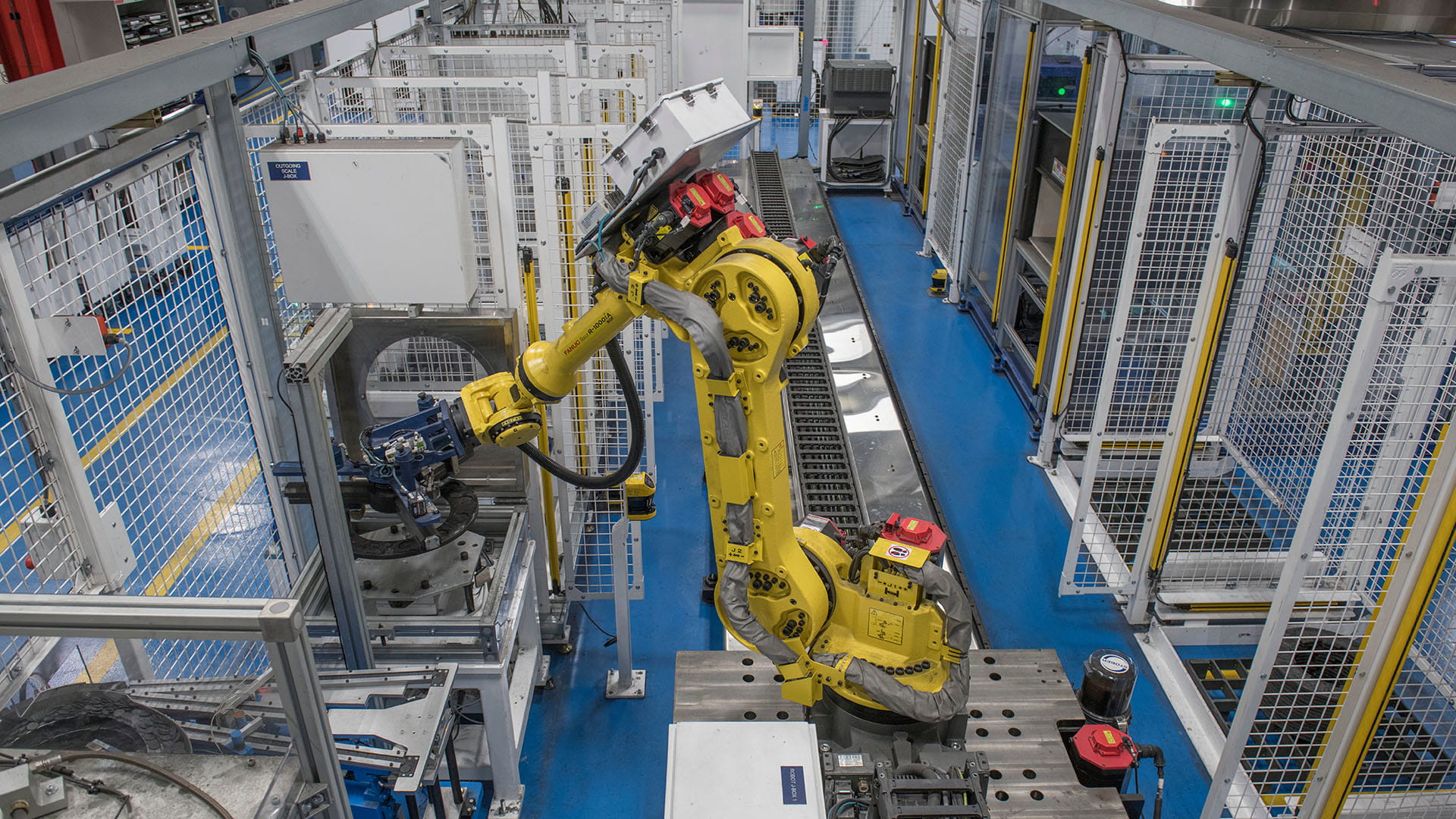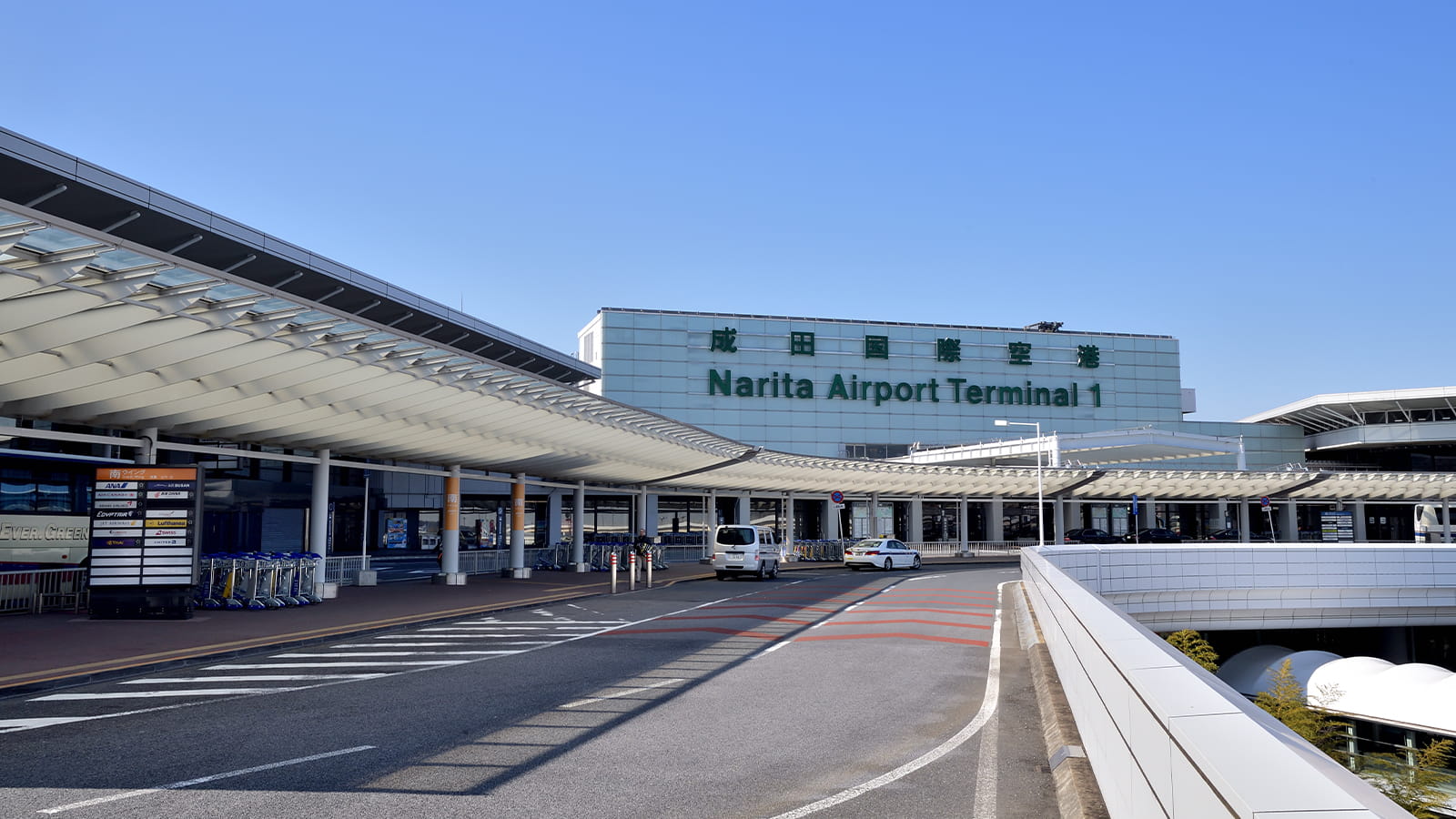Pulling out all the stops to make carbon brakes more environmentally friendly
Collins Aerospace’s Wheel & Brake team finds new ways to advance sustainability when producing its industry-leading DURACARB® brakes
For those onboard a commercial jet, the lowering of the landing gear is a familiar sound signaling the home stretch of the flight. Then comes the sound of wheels on the tarmac, and the reassuring deceleration as the brakes slow the aircraft down from approximately 160 mph at touchdown to less than 20 mph in a matter of seconds so the plane can safely taxi to its gate.
During a typical touchdown, the friction between the brake disks converts the aircraft’s massive amount of kinetic energy into thermal energy that is then absorbed by the brake disks – collectively called a heat sink.
To accommodate this level of intensity, aircraft brakes must be extremely durable, reliable in every kind of weather, and must withstand extreme temperature increases. Under emergency conditions, they can be called upon to absorb as much as 100 million foot-pounds of energy – or the energy required to raise 100 million pounds a distance of one foot.
And if that wasn’t tough enough, the brakes must be made in a way that considers the aviation industry’s increased commitment to reduce its environmental impact.
That’s why the Wheel & Brake team at Collins Aerospace – a Raytheon Technologies business – is working hard to make sure sustainability drives design innovation and is also factored into the manufacturing process of its carbon brake assemblies.
“Sustainability is one of our company’s highest priorities,” said Ajay Mahajan, president of Collins Landing Systems. “Site by site, we’re all looking at ways to minimize waste so we can share those benefits with our customers and help protect the environment for future generations.”
A case in point is the work the Collins team in Pueblo is doing to reduce carbon waste and extend the lifecycle of their carbon brake disks.
Lighter materials mean less fuel consumption
Pueblo is one of three sites where Collins Aerospace produces its industry-leading DURACARB® carbon brakes for commercial aircraft; the other two are located in Spokane, Washington, and Santa Fe Springs, California. DURACARB® carbon is a proprietary material developed by Collins, designed to absorb more thermal energy and last longer than previous brake products.
“Our brake surfaces can reach up to 5,000 degrees Fahrenheit without failing during an emergency runway stop,” said Doug Hayes, director of carbon operations for the Collins Wheel & Brake team in Pueblo.
Carbon brakes are lighter than the older steel alternative and, when it comes to the aerodynamics of flight, lighter means more fuel-efficient.
“For instance, a Boeing 737 NG weighs 700 pounds less with carbon brakes compared to the steel brakes,” said Hayes. “This can save fuel on every flight, which in turn helps reduce greenhouse gas emissions.”
While these facts alone make carbon brakes a more sustainable choice, the Collins team saw opportunities to further improve sustainability levels by extending the lifecycle of the actual brake disks. The Collins EDL® (Extended Disk Life) process does just that.

Extending the lifecycle of carbon disks
DURACARB® brakes already provide Collins with the ability to reduce the number of disks made in production due to their long-lasting wear life. The EDL® process then allows Collins to further double the already-long disk life.
When brakes wear out and are returned to Collins Maintenance, Repair and Overhaul (MRO) centers in Hong Kong, London and Los Angeles, the disks that started out thick can be machined to create thinner disks that can be used again for a second field life. When those disks are subsequently worn and returned, the disks are sent to carbon machining experts in Pueblo, where they can be further inspected, machined and re-assembled into what is called a thick two-for-one disk that can then be certified and sent back out to the MRO sites for two additional field lives.
The EDL® process, used by the Wheel & Brake team in Pueblo – as well as by its sister teams in Spokane and Santa Fe Springs – has the potential to extend a brake’s lifecycle from what was previously one or two tours, or lives, in the field, to as many as three or four.
Less waste in the landfill
But what about the worn-down pieces that are too thin to use again? The vast majority of them are shipped down the road to a local steel mill in Pueblo. Delivered unprocessed and “as is,” the steel workers take the worn carbon brakes and use them as a key ingredient in the steel making process to construct new products, such as seamless pipe, rod and rails for railroads.
Hayes says the mutually-beneficial arrangement is helping to keep a significant amount of would-be carbon scrap tonnage out of the landfill. This is the kind of environmental stewardship that earned the Pueblo site a prestigious “24-Karat Gold Leader” award from the Colorado Environmental Leadership Program.
A new use for carbon dust
When carbon brake disks are machined to final print dimensions, the machining process leaves behind fine, but pure, carbon dust material. The Collins team was looking for a way to repurpose this dust and keep it out of the landfill and identified a global supplier of carbon and steel products that could help.
Thanks to this alliance, the carbon dust is now finding a new life as an ingredient for asphalt, concrete, industrial lubricants, fuel cells and coatings. It’s also showing up in everyday consumer products made from graphene, such as pencils and golf clubs.
Benefits beyond recycling
The Collins team is also looking for ways to cut down its energy and water consumption at the Pueblo plant, including alternatives to the high-temperature reactors needed to manufacture carbon brakes.
“We’re working with local officials to see how we might bring in renewable energy sources, such as wind and solar to make a positive impact on our operations,” said Hayes.
In addition to the carbon brakes success story, the Collins metallic brake structures that are designed in Troy, Ohio, incorporate a ceramic-based coating with protective properties that allow for less wear and longer life, thus reducing the need to manufacture replacements. The coating also reduces the need for paint stripping and recoating at each major aircraft overhaul, cutting down on Volatile Organic Compound, or VOC, emissions.
Learn more about how Collins Aerospace is contributing to a more sustainable aviation industry at CollinsAerospace.com/Sustainability.



